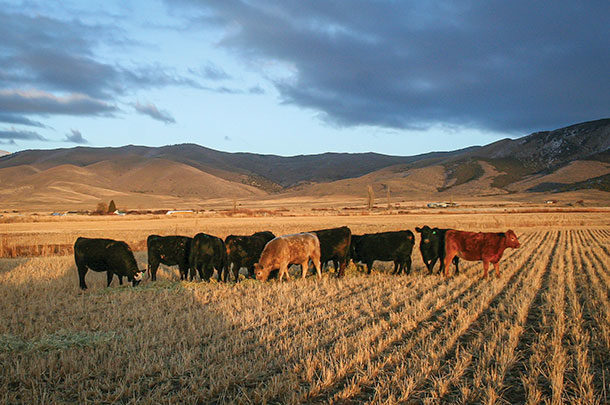The top three items a producer should be thinking about when considering replacement heifers are: cost, feed resources and genetics.
The most important of these factors is cost. The cost of retaining heifers can be high, especially if you have to purchase more hay and winter feed to keep them. Winter feed is the highest expense for most producers, and procuring extra feed for the additional number of cattle can be difficult. It is important to consider that it will take 16 months before heifers produce a calf and another six to eight months before that calf will be sold. Meaning your heifer won’t be paying for her feed and management for another two years. Selling these heifers can free up feed resources for mature cows and bulls reducing the amount of feed you have to raise or purchase, possibly allowing you to sell some feed.
Heifers will require higher-quality feed than most mature cows. Heifers should receive feed with a higher nutritive value to ensure that they reach 65% of their mature bodyweight by the start of the next breeding season. For a mature bodyweight of 1,200 pounds, your heifers should weigh 780 pounds by breeding. Heifers weaned at 550 pounds in November must gain a minimum of 1.5 pounds per day to reach that targeted weight by late March. Overall, producers must analyze the total cost of retaining heifers, including the cost of winter feed, breeding (if you choose to A.I.) and maintaining bulls, summer grazing, veterinary bills etc.
Genetics need to be adjusted for heifers before buying new herd bulls. Heifers require the use of bulls with calving ease and low birthweight expected progeny differences (EPDs) in order to reduce the risk of dystocia. Purchasing a bull which can breed both cows and heifers, and still reach targeted weaning weights, can be difficult. Eliminating the need for a bull with EPDs targeted for heifers would allow you to purchase bulls with higher EPDs in carcass and growth traits, which may be accompanied by increased birthweights.
There are many benefits of retaining heifers which should also be considered. First off, these animals are accustomed to your operation; they have followed their mothers through your pastures and know the ins and outs of your facilities. Retaining heifers also minimizes the risk of introducing disease into your herd. Diseases such as bovine viral diarrhea, respiratory diseases and venereal diseases can all be introduced by bringing new animals in. Also, producers which have specific maternal traits they are selecting for may want to retain heifers from their highest-caliber cows, as these genetics could be difficult to find from other herds.
For producers who are able, there are many benefits to buying replacement heifers. Purchasing heifers gives you the opportunity to expand your herd rapidly and change your breeding goals in a shorter period of time. If you are purchasing bred replacements you want to do so before the heifers are 22 months of age or two months prior to their expected calving date. ![]()
PHOTO: Winter feed can be one of the biggest costs when retaining replacement heifers. Staff photo.

-
Carmen Willmore
- Extension Educator
- University of Idaho
- Email Carmen Willmore








